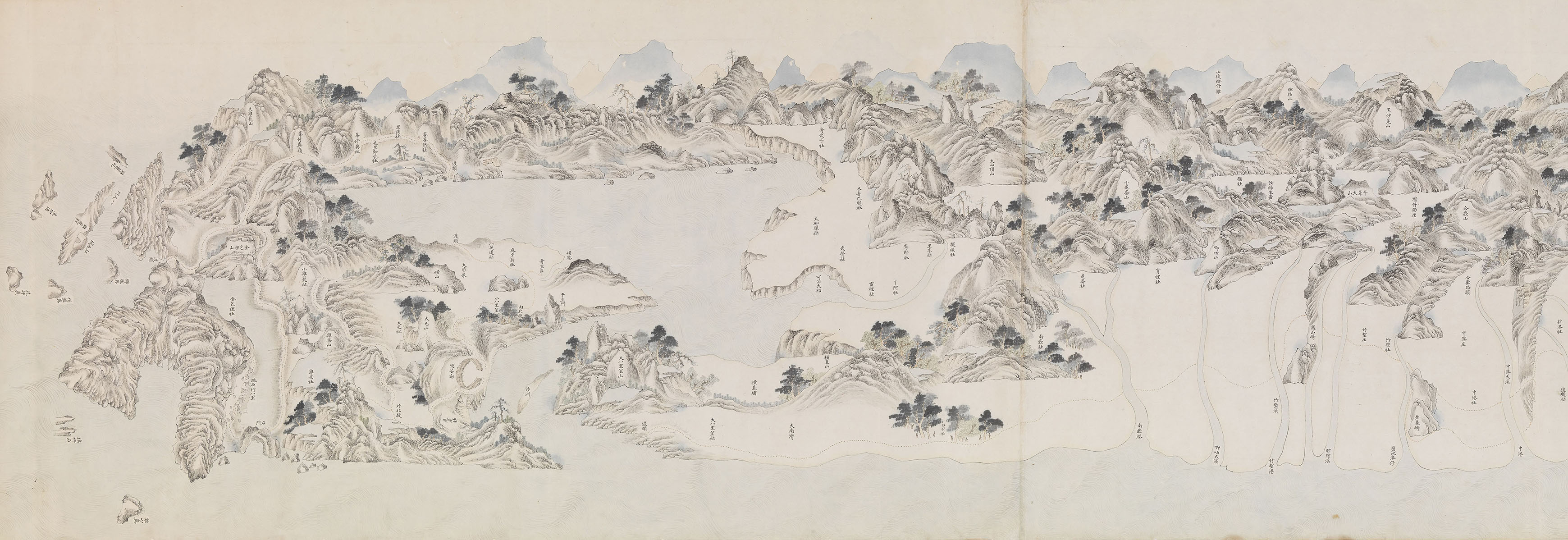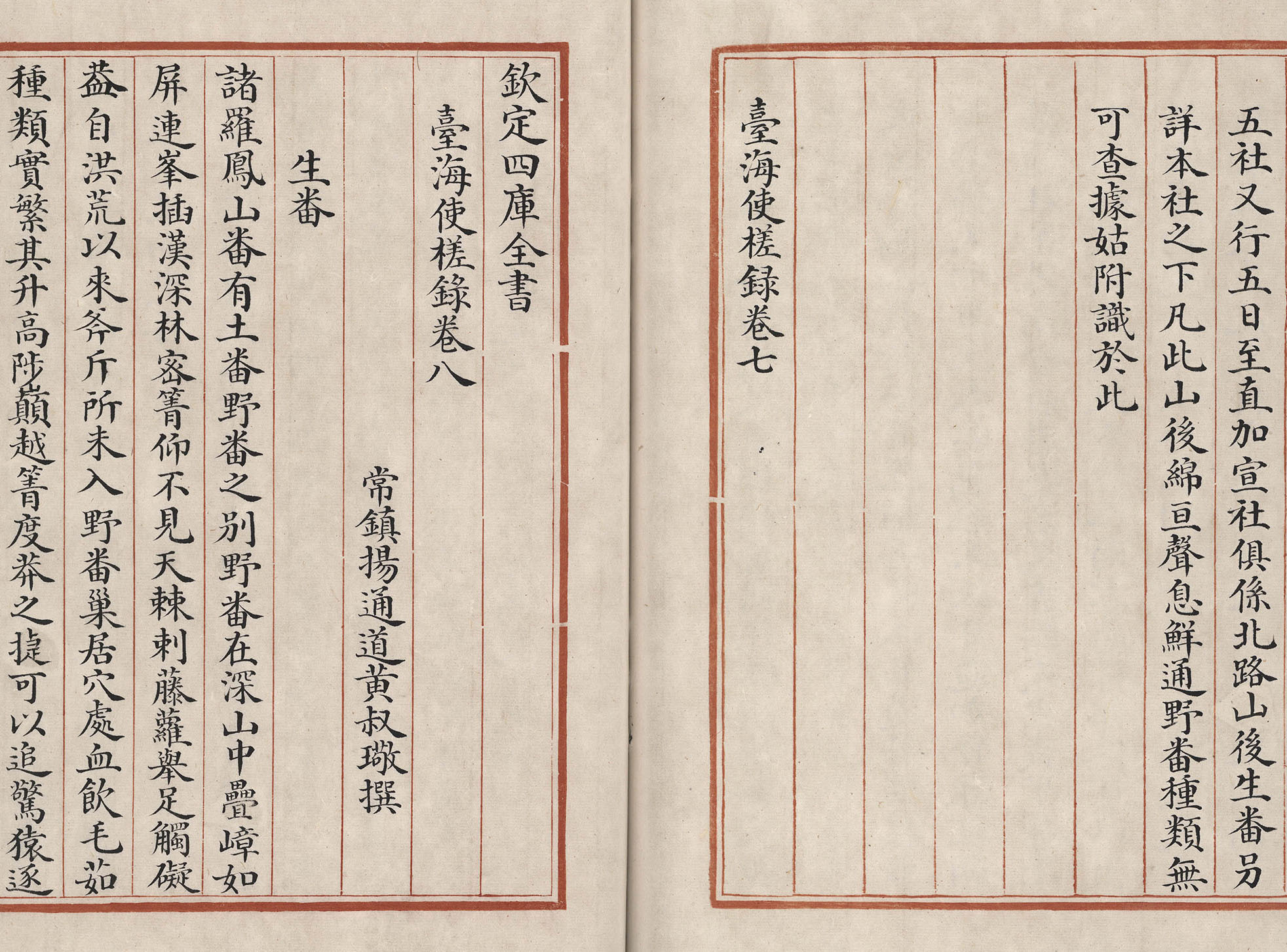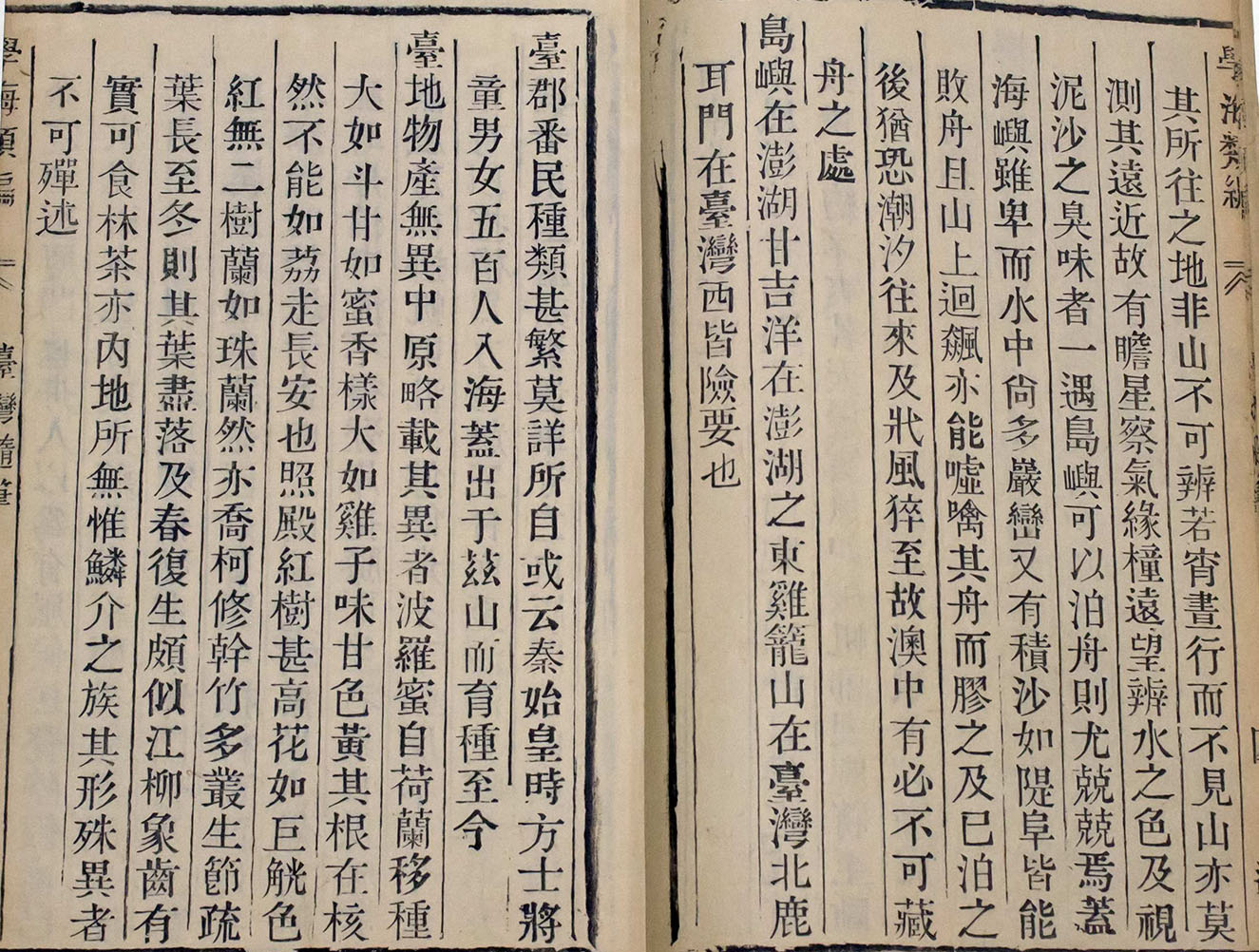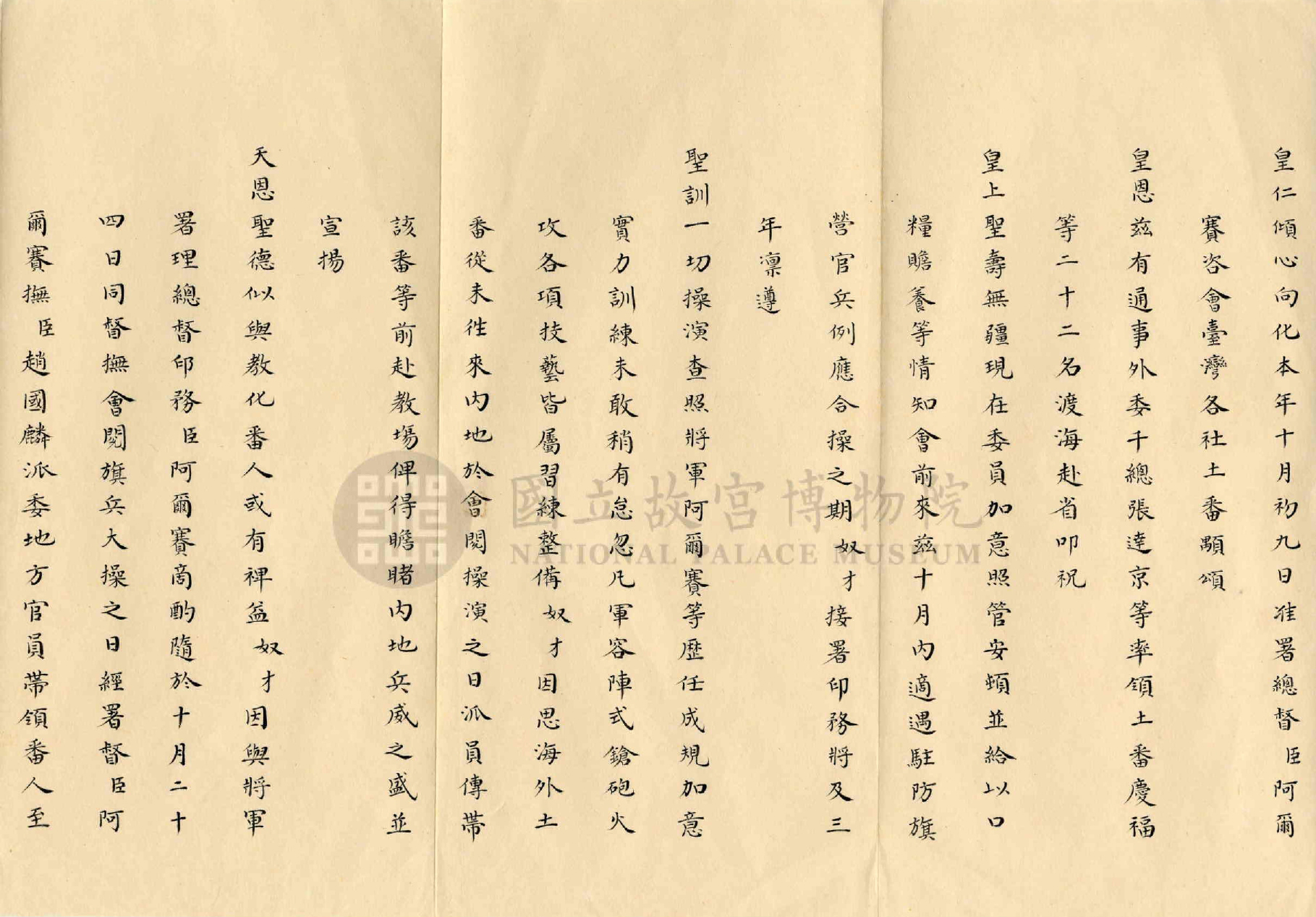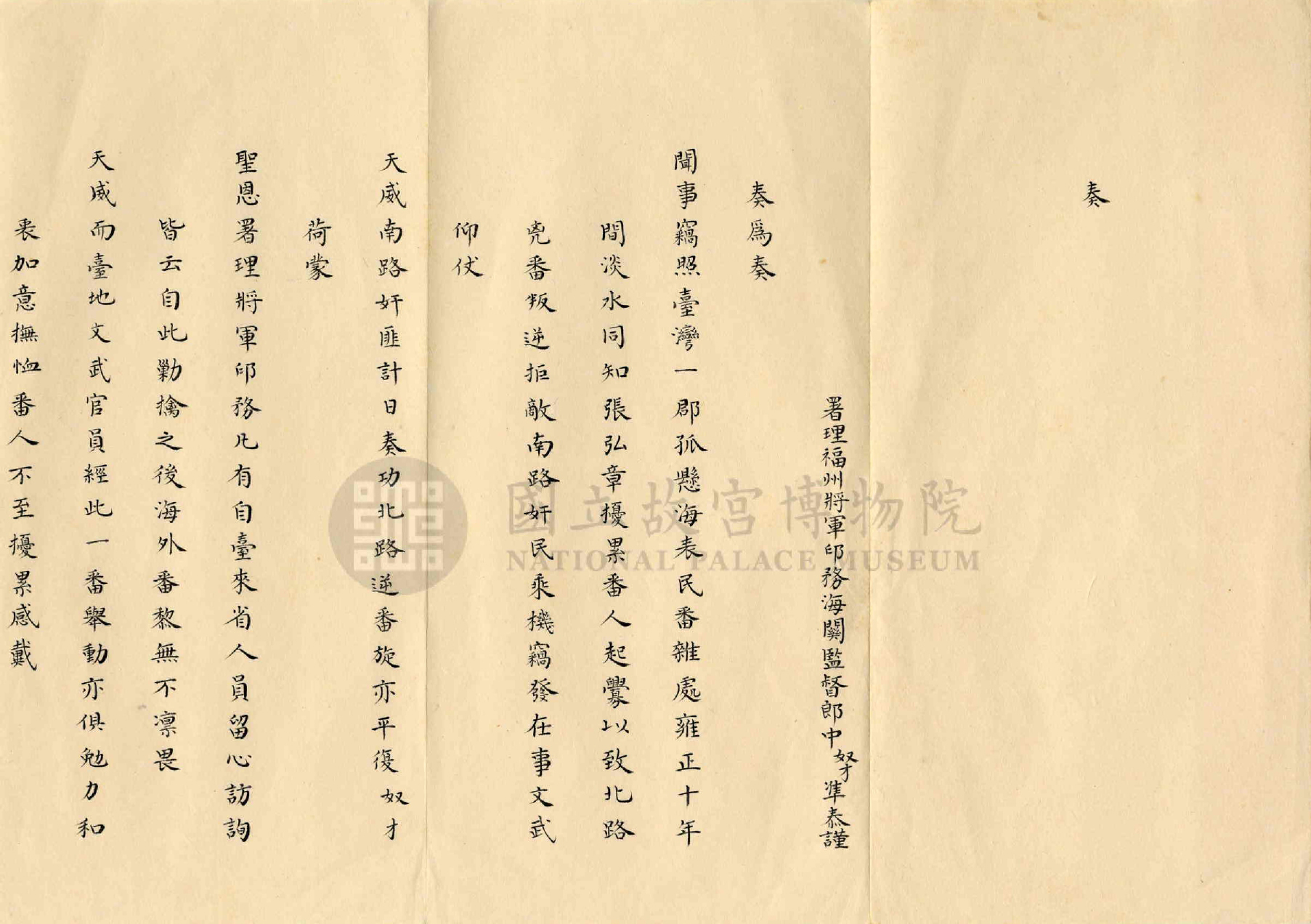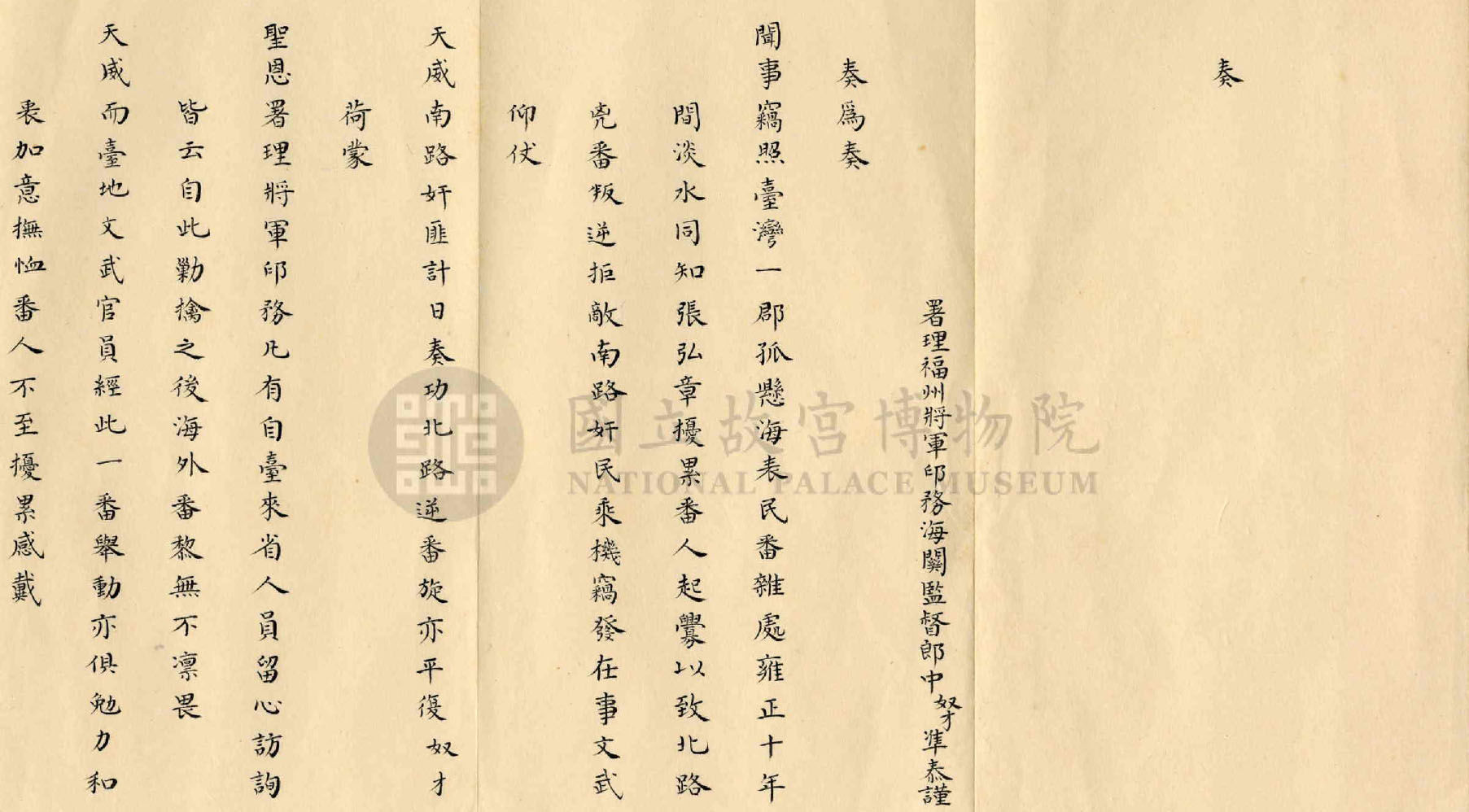Imagination and the Curious
The various Qing dynasty historical documents that deal with Taiwanese indigenous peoples not only reveal an ideological bias, they also contain a mix of imagination and curiosity about the "alien," the descriptions of which often even exhibiting these two extremes. The analogy of aborigines as indisputable "primordial peoples" from the society of remote antiquity is but another culturally egocentric view denigrating indigenous peoples as uncultivated barbarians.
Map of Taiwan and the Penghu Archipelago
- Yongzheng reign (1723-1735), Qing dynasty
- Colour on paper
The "Map of Taiwan and Penghu Islands," produced by Huang Shu-Ching, who was dispatched in 1722 as the first censor to visit Taiwan, marked many indigenous tribal villages. This shows the grasp that the Qing court had of the indigenous tribes before the 18th century.
The detailed drawing shows there were only a limited number of indigenous villages in the Kaohsiung, Tainan, Chiayi flatlands that were pioneered earlier by the Han Chinese. Some of the villages were actually Han Chinese settlements. There were more tribes in central and northern Taiwan and the Hengchun peninsula. Because eastern Taiwan had not been drawn yet, the phrase/terms "to go to eastern Taiwan, depart from Barao, Laobo, and Kavalan to Puyuma Mishe," "eastern Taiwan Puyuma Mishe," and "eastern Taiwan Kavalan" were used as a descriptions.
The villages shown in the drawing belonged mostly to lowland tribes. However, the mountain areas also marked the villages of today's 16 legally recognized tribes. The drawing also shows the officially designated "undomesticated barbarian boundaries" and hunting areas of indigenous tribes (shown as "deer fields").
Taihai Shichalu
- Records from the Mission to Taiwan and Its Strait
- Written by Huang Shujing
- Manuscript copy from the Siku Quanshu (Wenyuange edition)
- Qianlong reign (1736-1795), Qing dynasty
The Records of Envoy to Taiwan was written by the first censor to visit Taiwan, Huang Shu-Ching. The main printed editions are the 1736 engraved version, the Siku Quanshu version, and the Nanhai Kongshi version. The version in the NPM's collection is the beautifully written version from the Complete Library of the Four Treasuries from the Wenyuan Hall.
Scrolls five to seven of the Records of Envoy to Taiwan are the "Pingpu Customs Six Studies." Scroll eight is the "Records of Barbarian Customs." The "Pingpu Customs Six Studies" and the "Records of Barbarian Customs" are summaries of the life, habit, customs, and ceremonies of the indigenous peoples of Taiwan. The so-called "six studies" refers to the six major events in various villages (living area, food, clothing, marriage, funerals, and utensil, and the records of them. This is the Han Chinese's first systematic record of Taiwan indigenous peoples. Huang Shu-Ching used the area as the categorization method to classify indigenous villages. Contemporary anthropologists even think that it is enough to echo the classification of ethnic groups produced under the concept of modern disciplines.
Taiwan Suibi
- Journal on Taiwan
- Written by Xu Huaizu
- Imprint in wooden movable type by the Chao's of Liuan, 11th year of the Daoguang reign (1831), Qing dynasty
In the spring of 1695, Yunjian (Jiangsu Songjiang Prefecture) administrative assistant Hsu Huai-Tsu visited Taiwan and conducted a preliminary inspection of Taiwan's name, geography, history, products, and indigenous culture. Later, he wrote a short work called Taiwan Notes. Although this work contained less than 2,000 words, it was the earliest record of the Qing visiting Taiwan. This work is even older than the Travelling Records of Early Taiwan written by Yu Yong-He.
Because the bloodline of the numerous Taiwan tribes is impossible to trace, it was linked with the legend of the people sent abroad by Qin Shi Huang to seek the immortality potion as recorded in the Records of the Grand Historian. Legend has it that during the time of Qin Shi Huang, a method master brought 500 boys and girls overseas to the region, where they inhabited there and gave birth to people who became the ancestors of said region today. Said legend includes the origin of the Taiwanese indigenous peoples in the traditional knowledge system.
Palace memorial on the pacification of Taiwanese aboriginal rebels and their compensation
- Presented by Juntai, Acting General of Fuzhou
- 25th day of the 10th month of the 12th year of the reign (Nov 20, 1734), Qing dynasty
In 1734, instigated by Minnan and Taiwan officials, indigenous peoples from 22 Taiwanese tribes crossed the ocean to Fuzhou, Fujian to celebrate the birthday of Emperor Yongzheng (1678 - 1735; reigned from 1722 - 1735). The Minnan officials valued such an activity highly and reported the whereabouts of the indigenous people in detail. Zhun Tai, a langzhong (an ancient official title) and the General of Fuzhou, reported the arrival of the indigenous peoples to Fujian and used it as an example to show how the Qing empire had civilized them, to which the emperor wrote "I ask you officials to do your due diligence and stop wasting time on vane matters," reminding the officials to serve with their hearts and not focus on things so frivolous.


